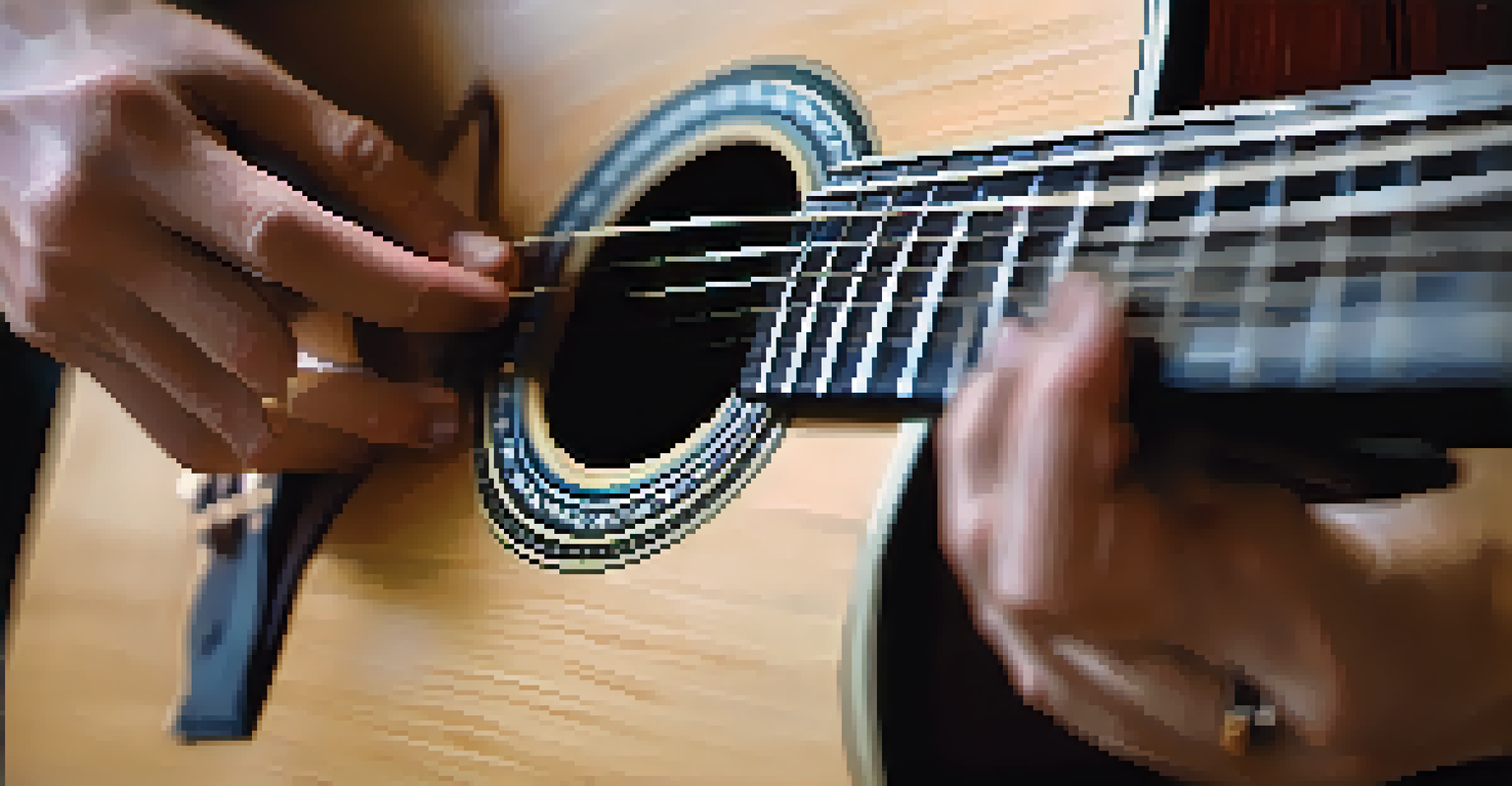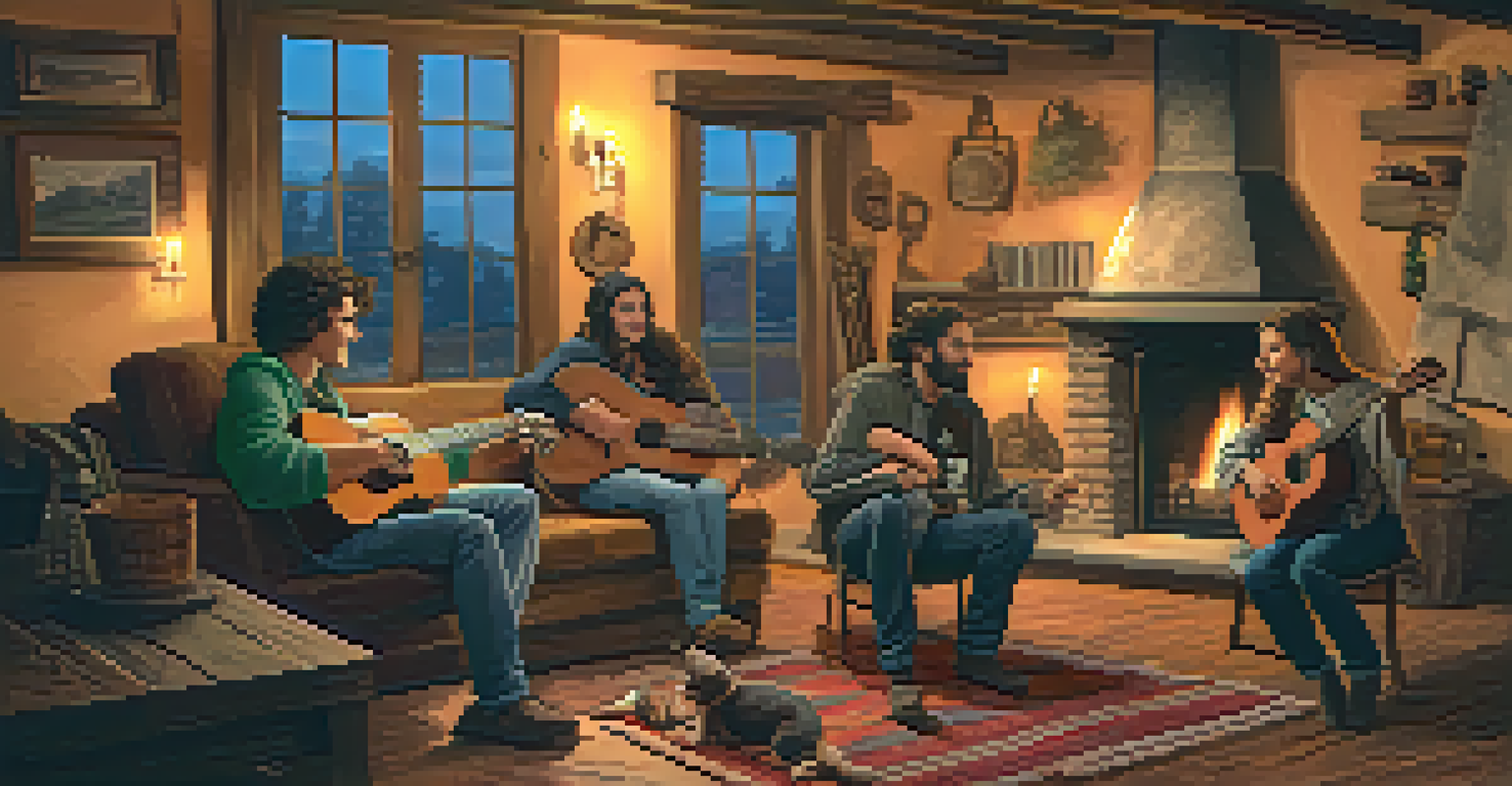Understanding DADGAD Tuning: Celtic and Folk Music Applications

What is DADGAD Tuning and Its Origins?
DADGAD tuning is an alternative guitar tuning that rearranges the standard EADGBE to DADGAD. This tuning creates a rich, open sound that is particularly suited for folk and Celtic music. Its origins are often attributed to British and Irish folk musicians, who sought a way to evoke the haunting melodies and harmonies characteristic of their musical traditions.
The guitar is a small orchestra. It is polyphonic. Every string is a different color, a different voice.
The tuning allows for a blend of major and minor chords effortlessly, which is why you’ll often hear it in traditional ballads and contemporary folk songs. Think of it as a painter finding a new palette; it opens up a world of creative possibilities. Musicians can achieve lush harmonies with just a few finger placements, making it accessible for beginners and appealing for seasoned players alike.
Many famous guitarists, including Pierre Bensusan and Bert Jansch, have popularized DADGAD, showcasing its versatility. This tuning not only enhances the guitar's natural resonance but also invites players to explore new musical ideas, making it a favorite among those who dive into the realms of folk and Celtic music.
The Unique Sound of DADGAD Tuning
One of the standout features of DADGAD tuning is its ability to produce a sound that is both full and airy. The open strings resonate together, creating a harmonic richness that can evoke a sense of nostalgia or longing. It’s almost like the guitar is singing a story of its own, drawing listeners into its emotional landscape.

The lower D and A strings provide a solid foundation, while the higher G and D strings add sparkle. This interplay allows for intricate fingerstyle patterns and drone effects, which are hallmarks of folk and Celtic music. For example, when a player lightly strums the open strings while fretting a melody, it creates a weaving tapestry of sounds that feels alive.
DADGAD Tuning Enhances Musical Depth
This alternative tuning enriches folk and Celtic music by allowing for intricate harmonies and emotional storytelling.
This unique sonic quality makes DADGAD particularly effective for storytelling through music. Imagine a gentle breeze carrying the notes away, each one telling a tale of the past or painting a vivid picture in the listener's mind. It's no wonder that many musicians gravitate towards this tuning as a means of expression.
Celtic Music and DADGAD: A Perfect Match
Celtic music is rich with history and emotion, and DADGAD tuning complements this beautifully. Many traditional Irish tunes, such as jigs and reels, can be played in DADGAD, allowing musicians to maintain the intricate rhythms while enhancing the harmonic depth. This tuning lends itself to the dance-like quality of Celtic music, making it feel more vibrant and engaging.
Music is the shorthand of emotion.
In fact, many traditional Celtic tunes have been passed down through generations with DADGAD as the preferred tuning. This has resulted in a treasure trove of music that feels both timeless and fresh. When you hear a lively reel played on a guitar in DADGAD, it’s like stepping into a lively pub where stories and laughter flow freely.
Moreover, DADGAD allows for easy transitions between major and minor keys, giving musicians the freedom to explore different moods within a single piece. This fluidity is essential in capturing the essence of Celtic music, which often tells tales of joy and sorrow in equal measure.
Folk Music: Expanding the DADGAD Horizon
Folk music, much like Celtic traditions, thrives on storytelling and emotional connection. DADGAD tuning has found a warm home in this genre, as it facilitates intricate fingerpicking patterns and chord progressions that resonate with audiences. The gentle, flowing sound produced by DADGAD often evokes a sense of intimacy, making it ideal for solo performances as well as group settings.
Many contemporary folk artists, including Nick Drake and Kate Bush, have embraced DADGAD for its unique tonal qualities. They’ve painted their narratives with this tuning, creating a soundscape that is both familiar and new. When you listen to these artists, you can feel how the tuning shapes their music, inviting the listener to engage more deeply with the lyrics and melodies.
Celtic Music Thrives in DADGAD
DADGAD tuning beautifully complements traditional Irish tunes, enhancing their rhythmic and harmonic qualities.
Additionally, DADGAD opens the door for creativity in songwriting. Musicians can easily experiment with alternative chord voicings and melodic variations, leading to compositions that feel fresh and innovative. This flexibility is one of the reasons why DADGAD continues to attract new generations of folk musicians.
Learning DADGAD: Tips for Beginners
If you're new to DADGAD tuning, the first step is to get your guitar in tune! You’ll want to lower the sixth string (E) to D, the fifth string (A) remains the same, the fourth string (D) stays, the third string (G) remains, the second string (B) drops to A, and the first string (E) lowers to D. It might sound tricky at first, but you'll quickly get the hang of it with a little practice.
Once you’re tuned, start by playing simple open chords like D, G, and A. These chords will feel different than in standard tuning, but that’s part of the charm! Experiment with strumming and fingerpicking to discover how each chord resonates. You may find that certain finger placements create beautiful melodies that you didn’t expect.
Don't hesitate to learn some traditional tunes in DADGAD! There are plenty of resources available online, including tutorials and sheet music, making it easy to dive into this world. Embrace the journey, and remember that every note you play brings you closer to mastering this captivating tuning.
Advanced Techniques in DADGAD Tuning
As you become more comfortable with DADGAD, you might want to explore advanced techniques that can elevate your playing. One popular method is the use of harmonics, which can create ethereal sounds that transport listeners. By lightly touching the strings at certain fret points while plucking, you can produce bell-like tones that add a magical quality to your music.
Another technique is incorporating drone notes, where you hold down a note while playing a melody over it. This is particularly effective in folk and Celtic music, as it mimics traditional instruments like the fiddle or bagpipe. The drone creates a rich backdrop that enhances the emotive quality of your melodies.
DADGAD Inspires Modern Musicians
Contemporary artists are embracing DADGAD to blend traditional elements with modern styles, introducing its unique sound to new audiences.
Finally, consider experimenting with alternate picking patterns and fingerstyle arrangements. DADGAD's open strings allow for intricate fingerpicking that can lead to unique rhythmic patterns. As you explore these advanced techniques, you'll find that DADGAD tuning opens up a world of musical possibilities that can deepen your connection to both the guitar and your audience.
The Future of DADGAD in Modern Music
As music continues to evolve, DADGAD tuning remains relevant and influential across various genres. Many contemporary artists are adopting this tuning, blending traditional folk elements with modern styles. This fusion not only keeps the spirit of DADGAD alive but also introduces it to new audiences who might not traditionally engage with folk or Celtic music.
In addition, the rise of social media and online platforms has made it easier for musicians to share their DADGAD creations. From YouTube tutorials to Instagram performances, artists are showcasing their skills and connecting with fans on a global scale. This has led to a resurgence of interest in alternative tunings, including DADGAD, as more people discover its unique sound.

Looking ahead, it’s exciting to think about how DADGAD will continue to shape the music landscape. As musicians push the boundaries of creativity, we can expect to hear innovative compositions that harness the emotive power of this tuning, enriching the tapestry of both folk and contemporary music.